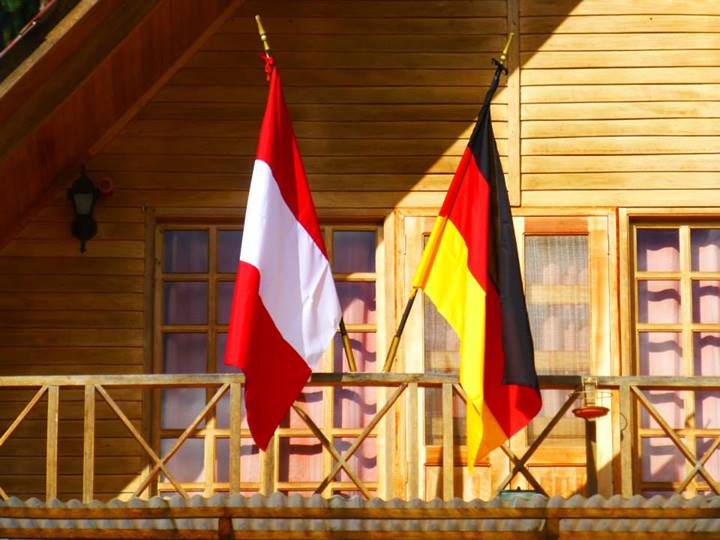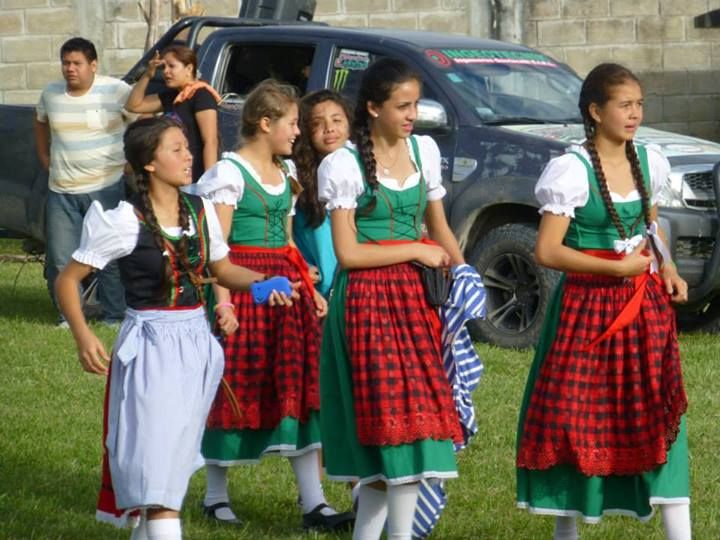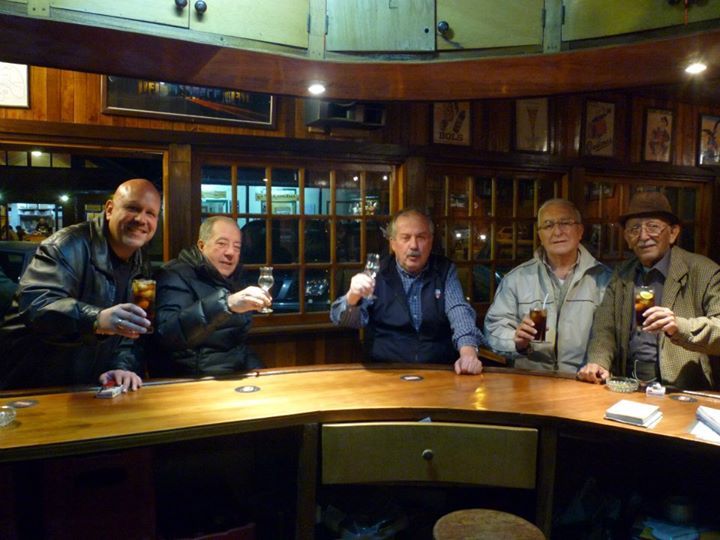Oxapampa Today - Colorful Life from an Old Tradition
- Anne Amaru

- Jan 14, 2024
- 7 min read
Updated: Jan 18, 2024
When I came to Peru 15 years ago, I heard for the first time about the Tyroleans and Germans who settled in central Peru on the "Ceja de Selva" over 100 years ago. (Eyebrow or edge of the rainforest). I was told that they have retained their customs to this day, wearing dirndls and lederhosen and dancing, partying and drinking beer together in the Tyrolean style...
Then I met Joachim Böhnert who worked there as a development worker from 2003 to 2008 and found his “adopted home” in Oxapampa. Since then he has come there at least once a year and built up a small property where he started a sustainable tourism business, which is a very laudable venture: Oxapampa Safarie – Cabañas y Camping
The idea for this article was born...
In 2004, the Berlin native came to this region for the first time on behalf of the “German Development Service (DED). In cooperation with the national administration department of the state nature reserves and the Yanachaga-Chemillén National Park, he worked there with the focus on “Sustainable development in the buffer zones of the national park”. et al. in agroforestry. This resulted in relationships and plans on site, which were unfortunately interrupted by the Corona pandemic since March 2020.
History
180 Austrian and 120 German settlers came to Peru in the middle of the 19th century to settle in Pozuzo. At this time, the Peruvian government encouraged European immigration to populate and colonize the Amazon. The emigrant groups fought their way through the jungle for almost two years until they reached their destination. At that time there were no roads or even paths leading there. These people fled poverty in their home countries to build a new life from nothing and are to be admired for their tenacity and determination. Despite the difficulties, they reached their destination under their own steam and have worked there ever since with their own hands. The colony was a success.

There are a number of very good publications that document this history. On Joachim Böhnert's website you can read more about "Tyroleans, Rhinelanders and Bavarians in the jungle of Peru". There you will also find further links on the topic.
The name OXAPAMPA comes from Quechua (language of the indigenous population of Peru) and is made up of "OCSHA" "straw" and "PAMPA" together, could therefore be translated as "Strohpampa".
Today's population
in the area around Oxapampa is made up of the indigenous communities Ashaninka and Yanesha - the local Indian population, made up of the descendants of immigrants the Andean regions and the descendants of the German and Austrian immigrants. According to the 2017 census, 87,470 people lived there at that time.
The main products produced in Oxapampa today
are coffee, granadillas (Passiflora ligularis), bananas, pumpkins, oranges, avocados and peppers. “Minifundos” predominate in agriculture, i.e. H. Land ownership is fragmented into small units. People also make a living from raising livestock.
Beekeeping is traditional
The quality of the products honey, pollen, royal jelly is valued in Peru because they come from the biodiversity of the regional plants. An example is the honey production of the Frey family. In addition, there are a number of projects that promote honey production, e.g. B. the “Centro Yanachaga” in Huancabamba and Quillazú.
Forestry developed as the most important economic sector
When the first road was built in 1943, the first sawmills appeared and over time became the main activity in the Oxapampa district, the area becoming one of the largest suppliers of wood in Peru. This led to the radical exploitation of the natural forest and its valuable timber. Since then, various institutions have been working on reforestation projects in the region. However, more than 95% of exotic tree species such as eucalyptus and pine were used in mono-forest plantations. In 1986, the Yanachaga Chemillén National Park was created with the help of the scientist Antonio Brack, who was born in Villa Rica.
The “Bambú Oxap” Project
Boom in agricultural products

As elsewhere in Peru, there has always been a boom in agricultural products, initially started by a few pilot farmers. "Goss fruity Granadilla species" introduced from Colombia are a good example of this. Unfortunately, these were and are grown in monocultures, sometimes with high use of herbicides and pesticides. The production of organic products is therefore urgently needed, also with a view to preserving bees. These products should also be interesting for the organic market in Lima.
Oil production
Since 1955, companies began producing oil in the Pichis and Palcazú parts. This encroachment is associated with environmental damage and social unrest among the Yanesha and Ashaninca tribal groups. Environmental awareness increased in the 1980s. In addition to the Yanachaga - Chemillén National Park, other protected areas with great biodiversity were founded, such as the San Matías - San Carlos protective forest. In 2010, UNESCO recognized the efforts and declared the region an Oxapampa-Asháninka-Yánesha Biosphere Reserve.
The vegetation of the reserves is impressive
At an altitude of over 2,000 meters you can find numerous ferns, bromeliads, lichens, mosses, epiphytes, orchids and Ericaceae in the forests. The nature reserve helps preserve important tree species such as mahogany (Swietenia macrophylla), tornillo (Cedrelinga catenaeformis), walnut (Juglans neotropica), cedar (Cedrela odorata) and Cat's claw or Uña de Gato (Uncaria tomentosa). The latter tree species is used by the local population to cure various diseases and also provides them with the opportunity for commercialization. At the same time, their collaboration promotes sustainable forest management.
Native cocoa without deforestation
The "Yánesha" take care of the preservation of the forests of the Palcazú Valley. They cultivate organic cocoa on over 100 m2 without the use of chemicals. A collection center for the harvests and the necessary tools were created to be able to produce natural, handcrafted chocolate without additives.
An interesting development in the Palcazú Valley! This area on the western and low-lying and tropical side of the Yanachaga-Chemillén National Park forms the “Reserva Comunal Yanesha”, the buffer zone of the national park. As of 2018 there was support from the organization < strong>“ProNaturaleza”- In cooperation with the “Society for International Cooperation -GIZ”.
Villa Rica coffee is one of the best in the world
In the Oxapampa – Asháninka – Yánesha (Pasco) biosphere reserve there is also the town of Villa Rica, where fair trade organic coffee is produced. The coffee has won international awards. In 2005 it was considered one of the finest coffees in the world, created by the climatic conditions and soil qualities of this area and the production techniques of the coffee farmers.

Particularly worth mentioning here is their sustainable cultivation of coffee in agroforestry systems. These also receive e.g. B. the habitat of the local bird species and give the coffee from Villa Rica a few more stars and fit exactly into the concept of a biosphere reserve. Here the residents are rightly proud of their “Coffee Valley” and their “Coffee Route”.
The Villa Rica Coffee Route
There are various farms in this region, most inspired by the Austro-German way of life, where tourists can stay in farmhouses and experience the coffee culture. The stay can be combined with a tour of the coffee plantations; the visitor can even pick coffee beans and follow the entire journey from harvesting to drying the beans.
In addition to visiting the farms and tasting coffee, you can also take a boat trip through the lagoon of El Oconal, 1.5 km from the city center, visit the El León waterfall, admire the orchid and ornamental plant collection in the Los Ositos botanical garden and visit the Yanesha community of Ñagazú, which also produces its own coffee.
Roads in the region
To this day, a problem for the commercialization of the products and also for tourism is the still poor road conditions. The road to Pozuzo leads through very mountainous terrain, particularly in the Yanachaga-Chemillén National Park, where landslides often occur in the rainy season. Between 2005 and 2008, with the help of an EU project in the region, the road from Pozuzo was expanded into the lowlands to Codo Pozuzo. However, this was partially destroyed again during the rainy seasons and became impassable. In the years that followed, it was repaired again and allows access to the lowlands with a road connection via Puerto Mayo to Pucallpa. This road will be partially paved, but will remain as a dirt road in the Yanachaga-Chemillén National Park.
Tourism
In the last 10 – 15 years there has been some development in tourism in the region. In Oxapampa, this led in part to an oversupply of hotels and guesthouses because it was believed that this was now big business. Many small local companies also went bankrupt due to the corona pandemic. But there are also positive developments that give hope again. This is especially true for nature-related tourism, such as bird watching, bicycle tours, hiking, etc. The above-mentioned road to Pozuzu and further into the lowlands to Codo de Pozuzo, etc... also allow mountain bike tours in the dry season to this region.
Selvamonos
The cultural initiative is also a positive development “Selvamonos” with numerous concerts since 2009, which brought many national and international musicians and a young audience to Oxapampa. Here too, we can hope that this festival will resume after the Corona pandemic!
Eco-Tourism
In recent years we have noticed an increase in people with the necessary capital who simply want to get away from the stress of the Lima juggernaut and buy land and build houses here. Here are examples from ecological tourism in Oxapampa:
The Ulcomano Ecolodge by Eduardo Cardena, former director of the Yanachaga Chemillén National Park
The Carolina Egg Inn – Oxapampa
Safe Travels
Peru has received the "Safe Travels" seal issued by the "World Travel and Tourism Council" is awarded to revive tourism. This seal was created due to the Covid-19 pandemic and is awarded internationally to countries that act responsibly with regard to safety and hygiene in tourism. 6 routes or tourist circuits in Oxapampa have been approved as safe destinations: the Villa Rica route, the Circuito Vivencias y Naturalea - Huancabamba, the Ruta del Colono - Pozuzo, Ruta Oxapampa, Ruta Parque Nacional Yanachaga Chemillén - Sector San Alberto and the Circuito Chontabamba.

The photos in this article are from Felix Corcuera Clermont from Oxapampa - Facebook group “My Oxapampa". My thanks go to him and to Joachim Böhnert, who helped me a lot in writing the article with their input and support.






































Comments